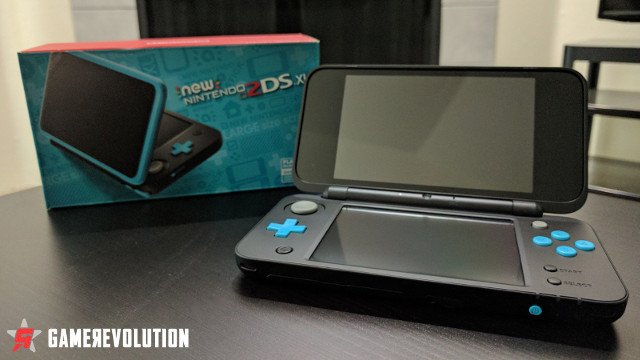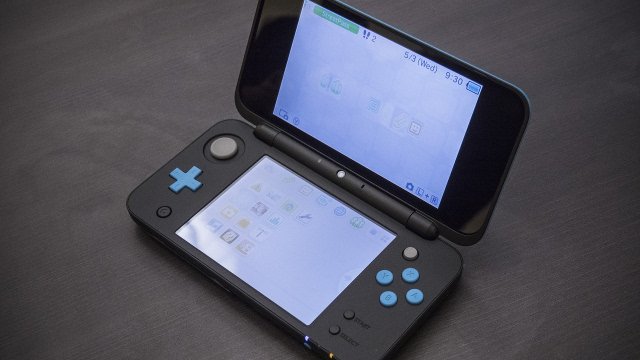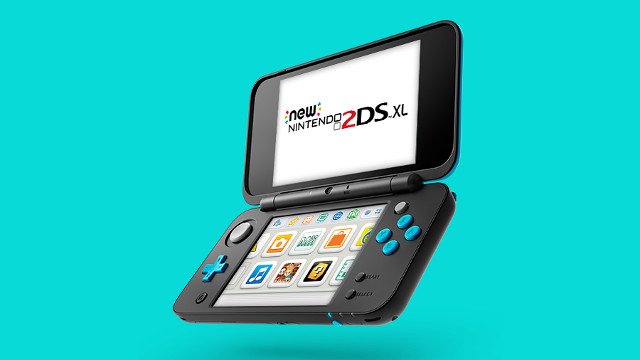Announced nearly four years ago, the Nintendo 2DS has been Nintendo’s entry level solution for consumers who desire to enter its handheld ecosystem at the lowest price possible. With an original MSRP of $129.99 (now $89.99), it was a compelling option during a time when the 3DS was pumping out well-rated exclusives on a routine basis. However, its awkward form factor was aesthetically displeasing and less portable than its 3DS brother, in addition to many features being cut out of the picture to achieve such a price point.
It’s now been three years, and Nintendo has decided to add a new SKU to its 3DS line-up as it nears the end of its lifecycle. That product is the Nintendo 2DS XL, a product that harmoniously blends the higher quality and premium features of the 3DS XL, with the more affordable pricing of the 2DS.
Nintendo Evolved

The stock images that you’ve likely seen of the Nintendo 2DS XL are surprisingly true to life. Sitting at the middle of the ecosystem’s current offerings, it’s the most stylish of Nintendo’s handheld offerings, particularly in the case of the textured top cover. While not necessarily an area that you touch often when playing games, it’s the first element you and others see when you glance at the device. This black, carbon fiber-esque cover is surrounded by a turquoise colored glossy edge. This same turquoise finish can be found on the face buttons, d-pad, as well as the shoulder, volume, and power buttons.
The presentation is a far-cry from the toy-like bright blue and red SKUs of the original 3DS XL. It appears Nintendo has decided—at least in this case—to craft something that is appealing to older gamers, the people who grew up on Nintendo. Its visual design might appear to be only superficial, but in some cases it might be enough of a difference to invite closet gamers to carry the 2DS XL along with them on business trips and in public settings.
More color options are certain to be offered in the future, and these might head in a different direction, but what’s available on day one is visually attractive, managing to catch the eye despite being minimalistic.
Heading Inside

Once you open up the 2DS XL you’re presented with largely the same layout you’ve seen with prior SKUs. The only main difference you’ll notice is that the left and right sides of the top screen are glossy this time around, avoiding the previous overabundance of hard, matte plastic.
Functionally, what’s here is much more like a New 3DS XL than the 2DS. You have access to both a C stick and ZL/ZR buttons, making some newer games that make use of these inputs available for play.
This is a slimmer version of the New 3DS XL, with the same screen size, yet slight improvements in both dimensions and weight. This allows the New 2DS XL to be even better option for portability, as well as delivering better ergonomics due to its less blocky shape and finger-friendly shoulder buttons.
Nintendo has achieved this by foregoing the addition of the Home and Power buttons below the bottom screen. Instead, the Home button is logically located below the d-pad, and the Power button has a dedicated location on the bottom underside.
Lastly, the volume rocker is now on the left bottom side of the device, and has much better feedback than before. On the negative side, the speakers in the 2DS XL are built in such a way that they vibrate the device in a noticeable manner. This could prove problematic for some consumers, encouraging headphone/earbud use.
Being Yourself

The internals of the 3DS have always been lacking when compared to modern hardware, even with Nintendo’s hardware improvements with the New 3DS XL that have been included as part of the New 2DS XL.
The 3DS’ unimpressive specs have never necessarily been an issue for game experiences, though. Many of the top 3DS games have fantastic art design, including Fire Emblem Awakening, Bravely Default, and The Legend of Zelda: A Link Between Worlds. Most of its library manages to look ‘good enough’, and when played in 2D mode performance issues aren’t a concern.
On that note, the 3D environment of the 3DS is where nearly all of its performance issues have been over the years. With this mode outright unavailable on the 2DS XL, there are very few situations where 30 FPS isn’t achieved consistently.
It bears mentioning that an AC adapter is included, unlike in the case of the New 3DS XL. This makes the device ready to go out of the box, as it should be.
Conclusion
What Nintendo has delivered is a mature device that showcases years of refinement, both in form and function. This might very well be the most polished handheld in the company’s history, and strangely enough it’s accomplished that without the 3D support that once was its core selling point.
For those who don’t mind losing access to 3D, the New 3DS XL is an outstanding device that is positioned to welcome millions of consumers who have missed out on over six years of outstanding 3DS exclusives.
Jonathan Leack is the Executive Editor of GameRevolution. You can follow him on Twitter @JonnyBeoulve.
A New Nintendo 2DS XL was provided by its manufacturer.
-
Visually appealing design
-
A slim profile that doesn't compromise screen size
-
Better ergonomics than other 2DS/3DS devices
-
AC adapter included
-
The speakers vibrate the device







